MATHIAS BRANDWEINER
The “Host of the Year, 2019” has already worked with a number of Michelin-starred chefs, most recently as restaurant manager and sommelier at the Ritz-Carlton, Berlin. The Austrian gained international experience in London, for example, where he poured the right wine for the likes of model Naomi Campbell, singer Fergie and Prince William. Recently named one of the top-50 sommeliers at the Rolling Pin Awards, the 27-year-old has been managing his own restaurant, the Hafenküche in Berlin, since the beginning of 2022.
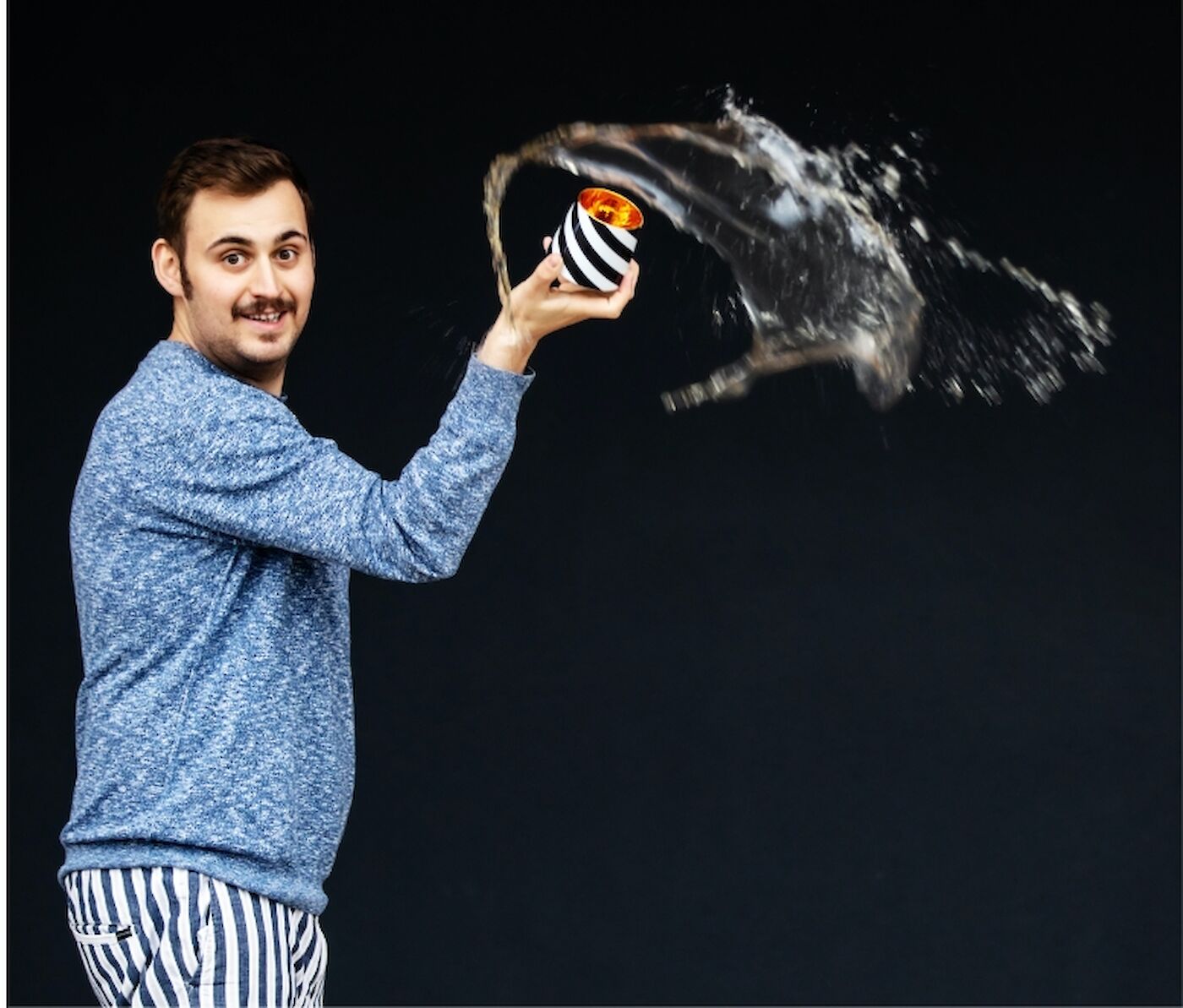
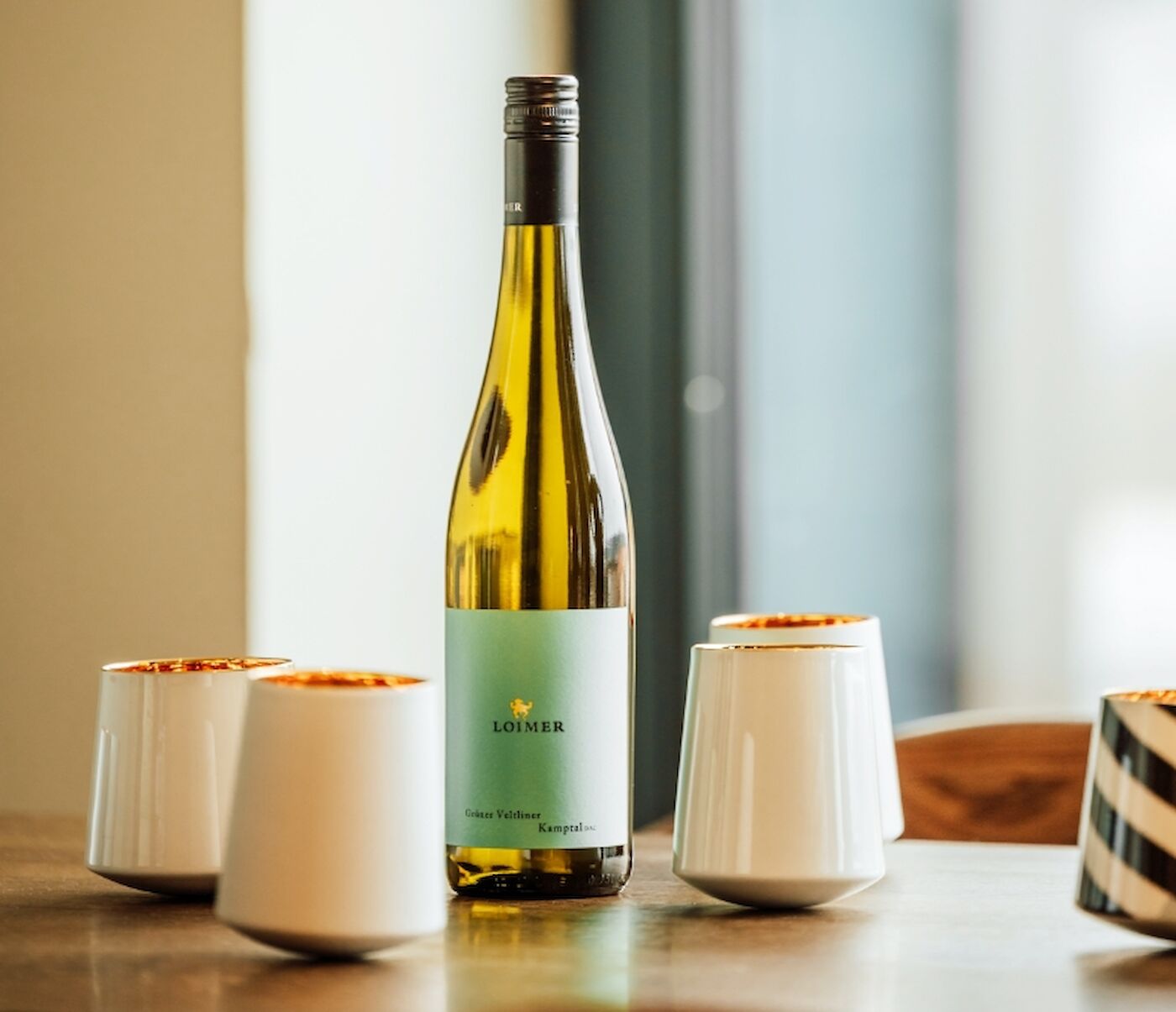
“I always find it cool when people think outside the box, which is why I was immediately determined to try them out.”
Mathias Brandweiner
INTERVIEW WITH MATHIAS BRANDWEINER
Mathias, you are 27 years old, you’ve worked in Kitzbühel, Vienna, London and most recently at the Ritz-Carlton in Berlin, including with three-starred chefs such as Heinz Beck and Dieter Müller. What was the most important experience for you?
I have to say that I have always had a lot of luck with my mentors and bosses. In Vienna I cultivated my passion for wine; in London I got to know an international audience, the more classic wine service, and the finest and most expensive wines. In Berlin, people are open to anything; you can experience diversity here. What really brings everything together is emotion. The emotions you feel from winemakers or from guests when you fetch them something new and unfamiliar. This has had the biggest influence on me.
What would you consider to be the perfect wine experience?
The whole wine experience is as complex as the world of wine itself. First of all, I think it’s nice that you can drink wine for any occasion. Whether at home after a tough week at work, when I’ll perhaps open a nice bottle of red for myself, or when a couple of friends stop by and we open a bottle of champagne. Not because we have anything to celebrate; just because we want to enjoy the moment.
Alongside the right wine, how important is presentation for you?
It is incredibly significant. For each bottle I open, I’ll take a first mouthful and then see where the journey carries me and how the wine wants to be presented. Then I decide whether it should be served into a Burgundy glass, the fine mouth-blown glass, whether I should decant it, and so on. That first mouthful is always crucial to work out where the wine wants to go.
What did you think when you heard about the porcelain tumblers for wine and digestifs?
I thought it was really cool that someone was thinking outside the box. And produced to such high quality, too. But …
… I also asked myself whether this would work from a functional perspective, of course. This just isn’t something you would put together in theory: porcelain, gold and wine. This is why I immediately said that I wanted to try them.
How did you test them? And how would you rate the tumblers in general?
Really intriguing and different. A charming, high-quality alternative to a glass – with advantages and disadvantages. For comparison, I took a classic white-wine, red-wine and Burgundy glass. This makes the differences really striking. The young, fresh, fragrant white wines that always jump sumptuously out of the glass, for example, were slightly more delicate in the porcelain, slightly more refined, slightly more balanced. I found that really quite charming.
So how does it feel to drink wine out of porcelain for you? The haptics and mouthfeel differ considerably when compared to a glass.
Absolutely. With the matt satin tumblers in particular, I find it extremely pleasant to have this coarse surface at your lips. It makes a huge difference to the drink because you have the three dimensions of aroma, taste and feel. The senses make you much more present in the moment. You don’t just enjoy or taste wine with your mouth. When it comes to the senses, 80% goes via the nose. And then you get this extra dimension – the haptics – the feeling of how I grip the tumbler. You turn it. You move it. You do something. Everyone does it when there is a wine glass on the table. You give it a swirl. You hold it up a bit. With the tumblers, you have a couple of additional options. They have something playful about them. This will definitely appeal to younger generations, too.
So, is the tumbler not for everyone?
If you are a committed wine drinker who has been drinking from mouth-blown glasses for ten years, then you have preconceptions. You have to approach it with an open mind and taste the wine several times. Wine is vibrant. It changes. This is something I found intriguing about the porcelain tumblers: the tertiary aromas were especially refined.
Who are the tumblers made for, in your opinion?
For people who have this understanding of handcrafted porcelain, who understand how to enjoy something beautiful and valuable – but also how to enjoy discovering something new and playfully varying it again and again. No two days are the same. One day I’ll drink from a glass and the next from porcelain. It’s the same at home. And I think that’s the great thing about it: always having something new and not lapsing into monotony.
Are there wines that taste especially good to you from the tumblers?
I think that the tumblers are particularly suited to uncomplicated, fun wines. The ones where you open the bottle, drink a glass and then you want to drink the whole bottle because it’s good and straightforward. I also think this really suits the product because it has something playful about it, something pleasurable. Ultimately, the tumblers are all-rounders; you can try anything in them.
Would you recommend anything in particular?
I think Burgundy grape varieties are very charming in the tumblers, beginning with a lovely, delicate Pinot Blanc that simply focuses on these tertiary aromas – on this beautiful floral quality rather than the exotic and fruity. But the Rieslings were also tantalising. They always have a very intense mineral flavour, which is brought out in a very refined way with these tumblers. The philosophical wines are perhaps less well suited – the ones that give you plenty to think about: the fairly mature wines, primarily.
From a restaurateur’s point of view, you have identified some disadvantages, too?
The filling capacity is tricky. You don’t know how much there is in there. A trained sommelier keeps tally internally as they pour and can judge the filling capacity on this basis. But the guest will ask themselves how they can know how much is in the tumbler. For this reason, it is more suited to bottle sales, generally speaking. It is astonishing how incredibly thin the walls of the porcelain are. But a mouth-blown wine glass is thinner and lighter when you swirl it. And you don’t warm a glass up because you’re holding the stem. As soon as you hold the porcelain tumbler in your hand for longer, the wine will warm quicker. This is something to watch out for with white wines in particular. But this can also be seen as a positive thing because the fact that it warms more quickly may lead to aromas being perceived that would not have been tasted otherwise.
We have just been talking about wine. What do you think of the digestif tumblers?
Absolutely fantastic. Really, really cool. Plenty of advantages and no disadvantages whatsoever. The shape is incredibly charming because the tumbler is a bit narrower at the top. The alcohol doesn’t hit your nose immediately. Sometimes the opening is far too large. You go in with your nose and the first thing you smell is the alcohol. This shouldn’t happen. With the digestif tumblers, you can discern the fine aromas especially well, be it a nice whisky, fruit brandy or tequila. It is extremely versatile.
Where can the tumblers be used in the restaurant trade?
In high-end gastronomy. I would recommend them to restaurants with expertise in wines. The ones who grab their guests and say: “Just give it a go”. For wine connoisseurs in particular who know all there is to know. You can tease the guest out of their comfort zone. If you have different wines for various dishes and this porcelain tumbler is used specially for one of them, then you have something new, something to talk about. And the wine will taste absolutely sensational from the tumbler. I think that this kind of meal out is all about experiences and emotions.
Are you someone who tends to go to restaurants or who invites people around to your home?
I love going out to eat. It’s my lifeblood – the greatest of life’s pleasures. And I always think it’s a talking point if someone starts on a juice detox or a diet. Then I think to myself: eating and drinking is so wonderful. How can anyone do without it?
Speaking of enjoyment: tell us a little more about your new culinary home, the Hafenküche in Berlin. What plans do you have?
The Hafenküche should be somewhere people feel at ease. A place where I would like to go out to eat: straightforward but still high-quality. A place for everyone. We want to be a restaurant where people experience informal, laid-back, friendly and warm service, where they sit in a pleasant atmosphere and can feel at home. A place where you can go and eat with family, but also go on a date.
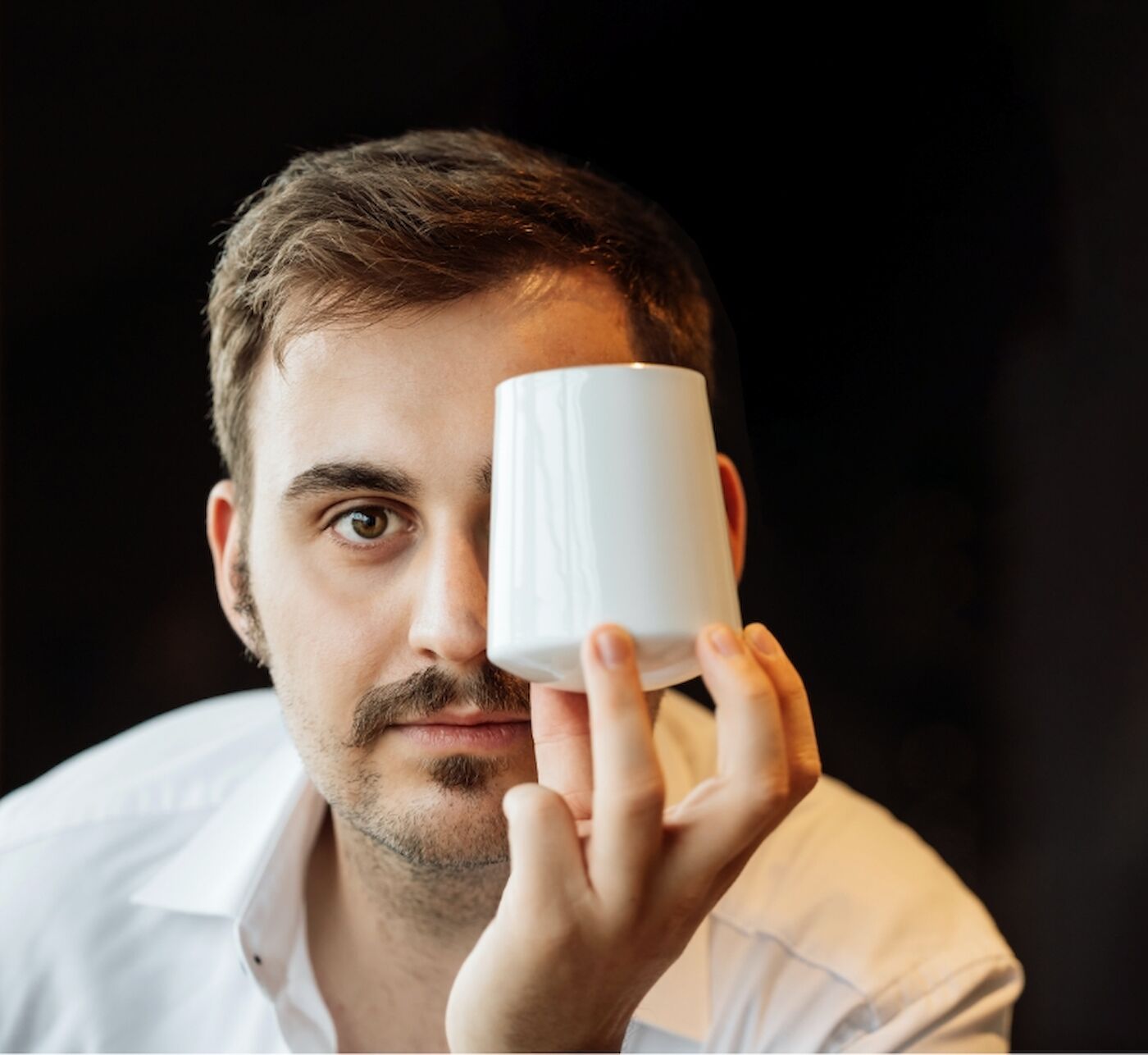
Fine tertiary aromas
To be able to precisely test all the tumblers, Mathias compared various glasses for white wine, red wine and Burgundy – and, of course, tested them with a large selection of wines – 25, in fact. Among other things, the expert was particularly impressed with the fact that the tertiary aromas, as they are known in wine jargon, were especially refined. “The young, fresh, fragrant white wines that always jump sumptuously out of the glass, for example, were slightly more delicate in the porcelain, slightly more refined, slightly more balanced. I found that really quite charming.”
“I think that the tumblers are particularly suited to uncomplicated, fun wines. The ones where you open the bottle, drink a glass and then you want to drink the whole bottle because it’s good and straightforward. I also think this really suits the product because it has something playful about it, something pleasurable.”
Mathias Brandweiner
With all the senses
Mathias found the mouthfeel and haptics especially noteworthy. The sommelier is particularly enthusiastic about the matt finish. “It makes a huge difference to the drink because you have the three dimensions of aroma, taste and feel. The senses make you much more present in the moment.” And this suits the pure, unadulterated enjoyment of wine, after all; taste is not the only thing to play a pivotal role. “When it comes to the senses, 80% goes via the nose,” explains Mathias.
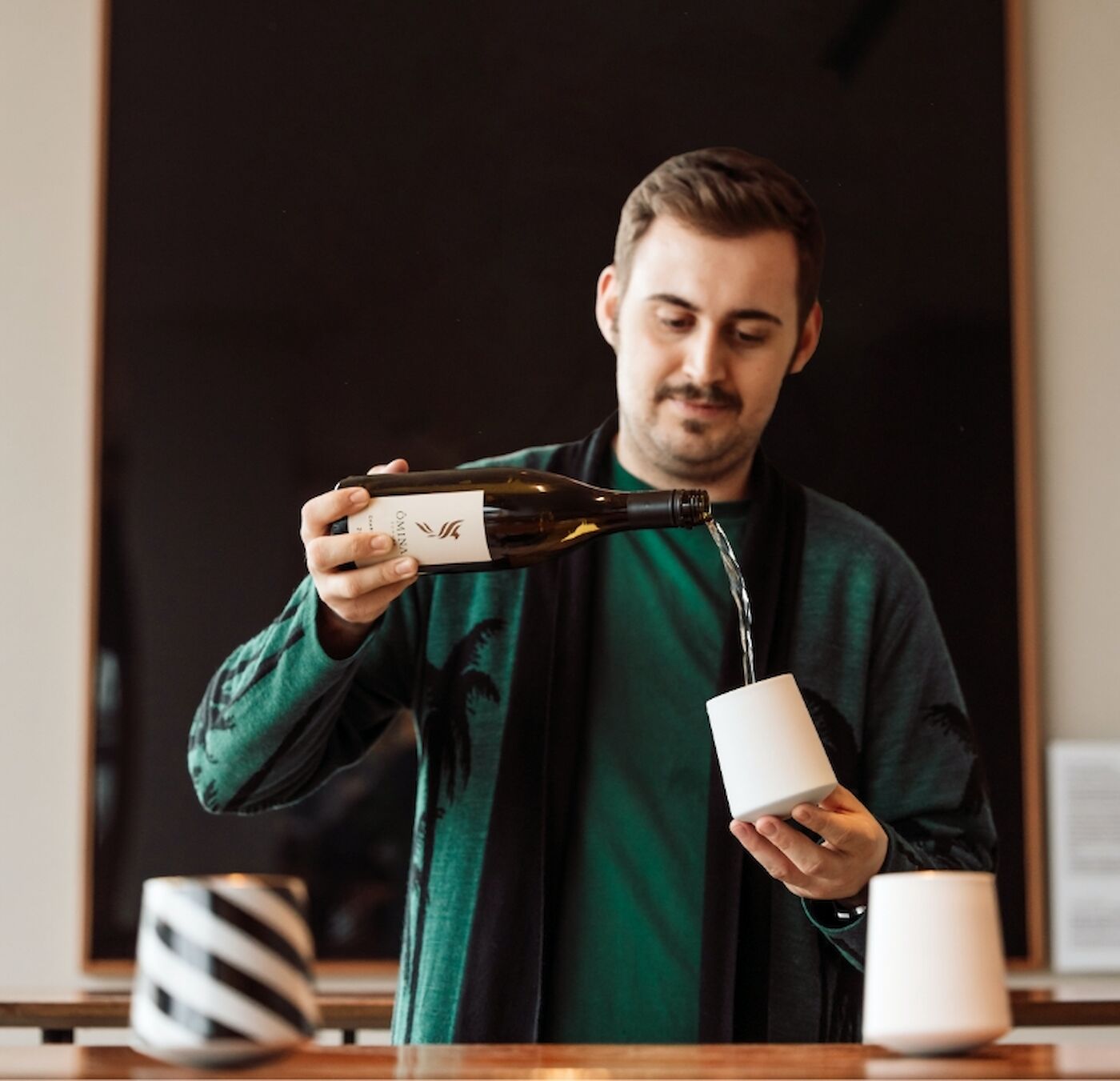
“And then you get this extra dimension – the haptics – the feeling of how I grip the tumbler. You turn it. You move it. You do something.”
Mathias Brandweiner
Out of the comfort zone
But the expert does also find disadvantages when compared to a glass. “The filling capacity is tricky.” Less of a challenge at home than in the restaurant trade. Nevertheless, it is also an opportunity for restaurateurs to tease the guest out of their comfort zone. You have something new, something to talk about. “This kind of meal out is all about experiences and emotions,” says Mathias. He also sees an additional benefit to the classic glass: If the tumbler is held in the hand for longer, the beverage warms. “But this can also be seen as a positive thing,” suggests Mathias, “because the fact that it warms more quickly may lead to aromas being perceived that would not have been tasted otherwise.”
“The tumbler are really intriguing and different. A sophisticated and charming alternative to a glass – with advantages and disadvantages.”
Mathias Brandweiner
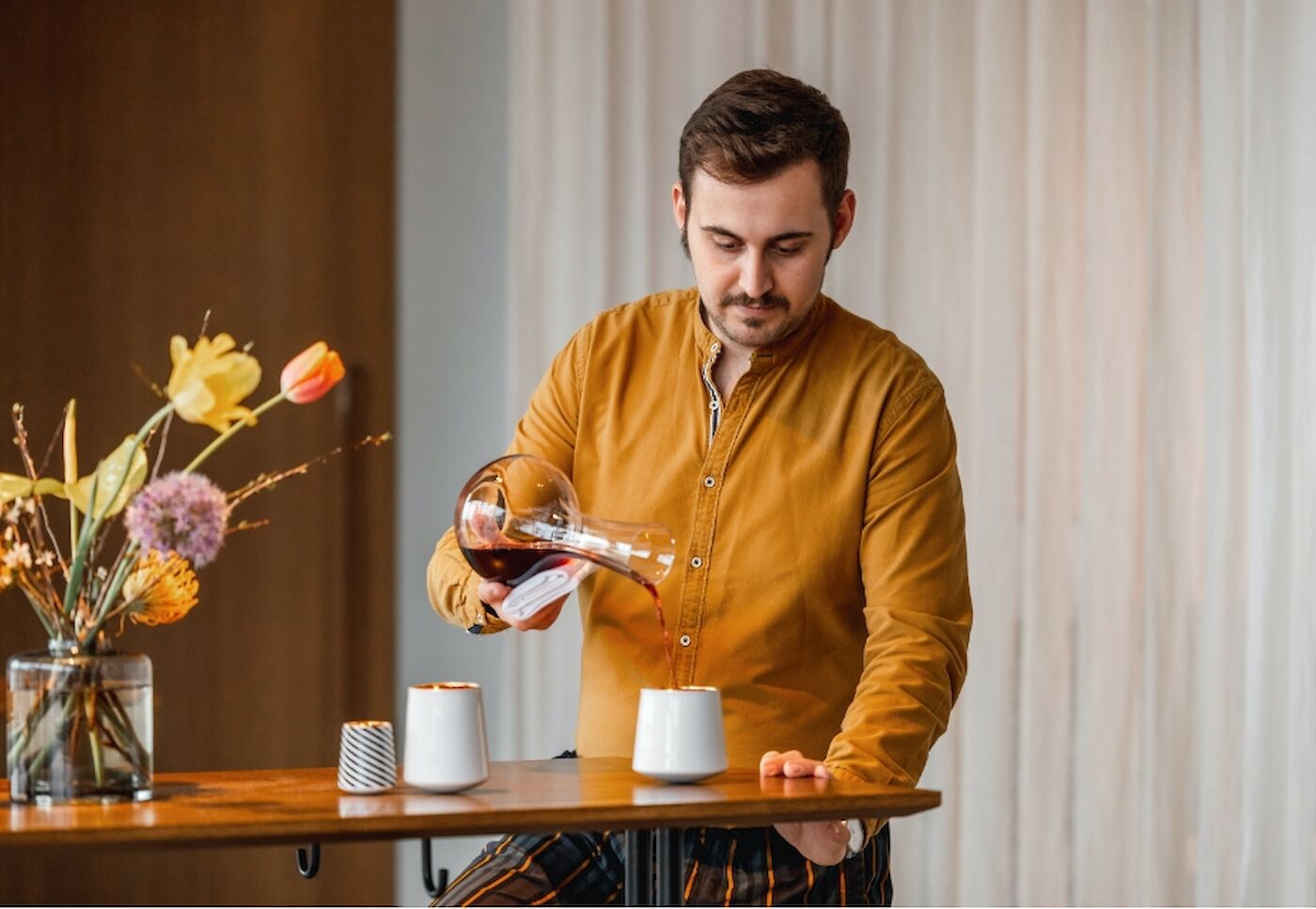
Won over by the digestifs
The sommelier was especially impressed by the digestif tumblers. “Absolutely fantastic,” he says, referring in particular to the virtues of the shape. The tumblers taper conically upwards and narrow significantly here. “This means that the alcohol doesn’t hit your nose immediately,” he explains. Unlike the shape of many other shot glasses, this makes it possible to discern the aromas better.
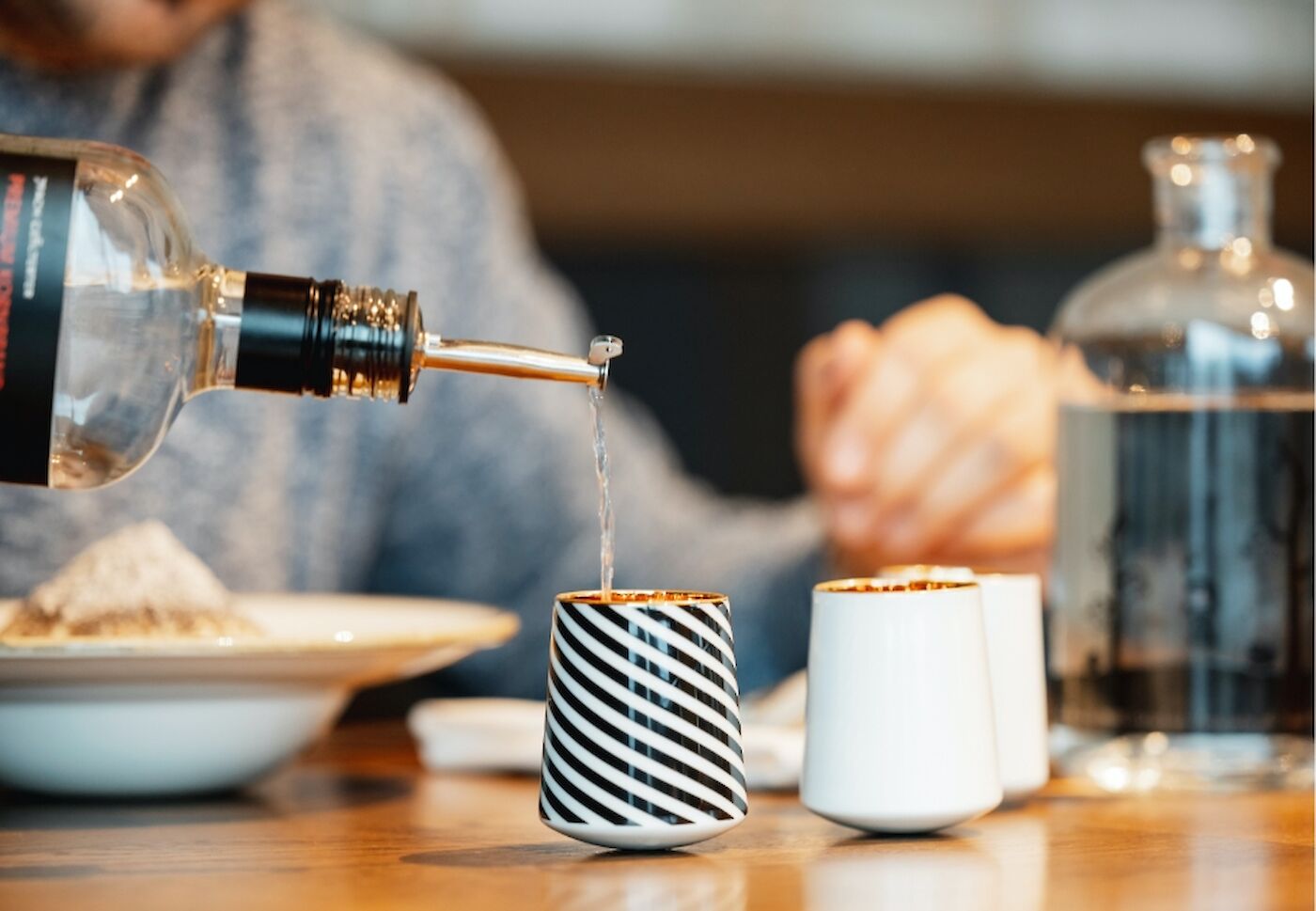
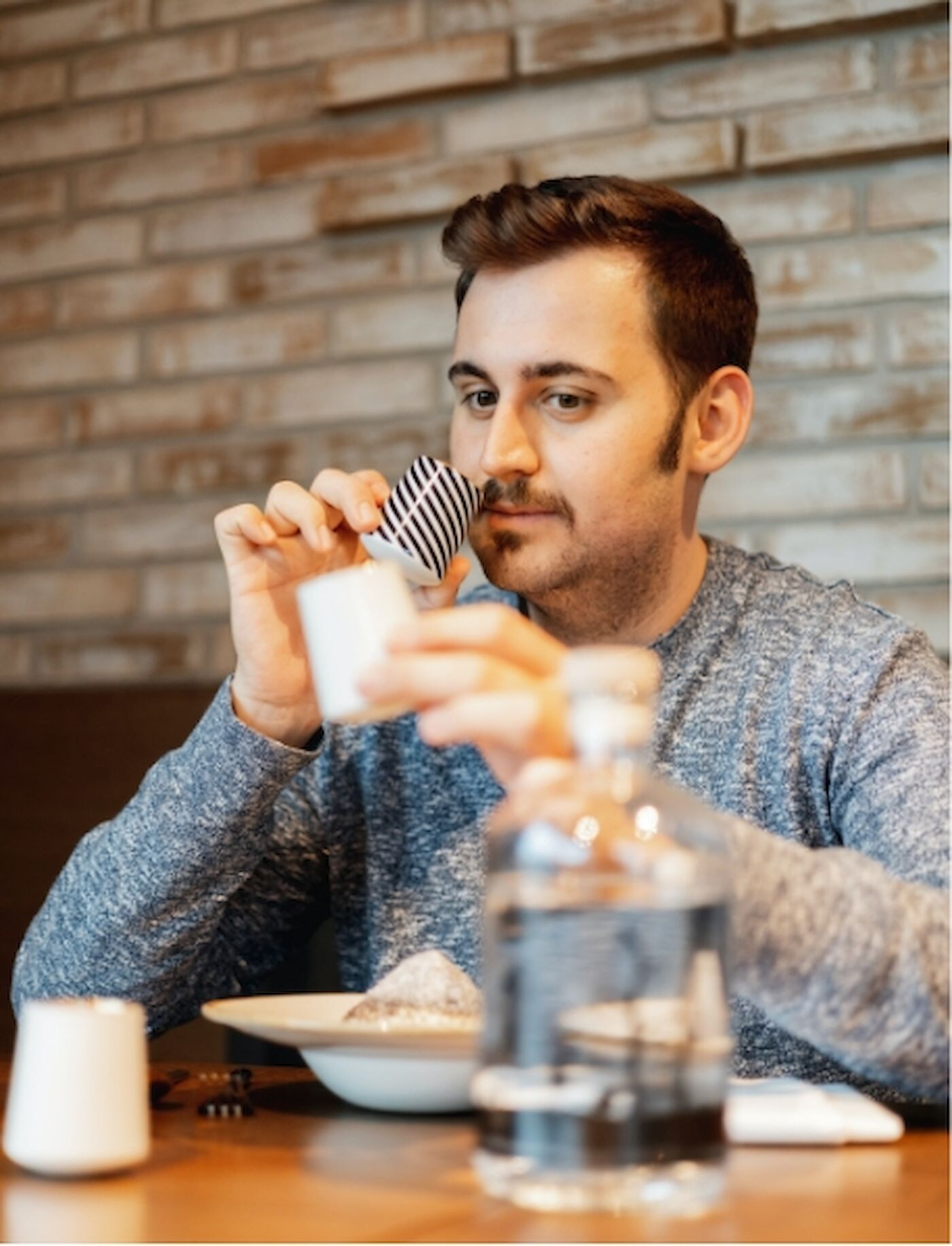
“No two days are the same. One day I’ll drink from a glass and the next from porcelain. It’s the same at home. And I think that’s the great thing about it: always having something new and not lapsing into monotony.”
Mathias Brandweiner
MATHIAS BRANDWEINER’S CV
At 18, Mathias Brandweiner completed his first sommelier training at the WKO campus in Vienna. After spending time as a commis sommelier at the Sofitel Vienna Stephansdom, the Austrian gained international experience at Apsley’s, a Heinz Beck Restaurant, at the Lanesborough Hotel, London (one star in the Guide Michelin), as well as at the Rivea by Alain Ducasse at the Bulgari Hotel & Residences London. In 2014, the now 27-year-old moved to Berlin, where he initially worked as a sommelier and restaurant manager at Le Faubourg at the Sofitel Kurfürstendamm, as well as the former Les Solistes by Pierre Gagnaire (one star in the Guide Michelin) at the Waldorf Astoria. In 2018, he devised and opened the POTS restaurant at the Ritz-Carlton, Berlin, alongside top chef Dieter Müller, where he headed a team of 20. Since 2022, he has been welcoming his guests in the German capital as host and director of the Hafenküche.
Excerpt of his awards and commitments
- “50 best sommeliers Germany”, Rolling Pin Awards 2021
- “35 best wine restaurants Berlin”, Star Wine List, POTS restaurant, 2020 and 2021
- “Host of the Year, 2019”, awarded by the jury of the Berlin master chefs
- Jury member of the “CUP ROT der GOURMETWELTEN”, 2019 to 2022
- Full member of the Sommelier Union Germany, since 2019
- Commitment to the wine regions “Weinviertel DAC” and “Wein Steiermark”, since 2017
- Certified Sommelier by the Court of Master Sommeliers, since 2014
› INSTAGRAM MATHIAS BRANDWEINER
› GRAND CRU GOLD IN THE ONLINE SHOP
PHOTOGRAPHY / VIDEOS: PCTRBRLN
